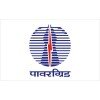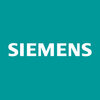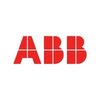Filter interviews by
Kalpataru Projects International Senior QA QC Engineer Interview Questions and Answers for Experienced
Kalpataru Projects International Senior QA QC Engineer Interview Experiences for Experienced
1 interview found
I applied via Referral and was interviewed before Apr 2021. There were 2 interview rounds.

(5 Questions)
- Q1. Quality Related questions
- Q2. Welding defects acceptance criteria
- Ans.
Acceptance criteria for welding defects
Acceptance criteria for welding defects are specified in codes and standards such as AWS D1.1, ASME Section VIII, and API 1104
The criteria depend on the type of defect, its location, and the material being welded
Examples of acceptance criteria include maximum allowable size and number of defects, distance from the weld centerline, and type of defect
Defects that exceed the acceptan...
- Q3. Pipe coating procedure
- Ans.
Pipe coating procedure involves applying a protective layer on the surface of the pipe to prevent corrosion and damage.
The surface of the pipe should be cleaned and prepared before coating.
The coating material should be selected based on the type of pipe and its intended use.
The coating should be applied evenly and in accordance with the manufacturer's instructions.
The coating should be inspected for defects and thickn...
- Q4. How to prepare measurement
- Ans.
To prepare measurement, follow these steps
Identify the parameter to be measured
Select the appropriate measuring instrument
Calibrate the instrument before use
Ensure the instrument is in good working condition
Take multiple measurements to ensure accuracy
Record the measurements accurately
Analyze the data to draw conclusions
- Q5. Contractor running bill checking
Interview Preparation Tips
Answer politely
Be confident
Top trending discussions






Interview questions from similar companies

Senior QA QC Engineer Interview Questions & Answers
Shapoorji Pallonji Groupposted on 9 Apr 2021
I applied via Walk-in and was interviewed in Mar 2021. There were 5 interview rounds.
Interview Questionnaire
2 Questions
- Q1. The technical question, related to codes,
- Q2. Be prepared before the interview
Interview Preparation Tips

Electrical Engineer Interview Questions & Answers
Welspun Enterprisesposted on 20 Nov 2024
I applied via Company Website and was interviewed in Oct 2024. There were 2 interview rounds.
(2 Questions)
- Q1. Motor type, Pump lowering, ESR piping etc.
- Q2. Solar Specification
(2 Questions)
- Q1. Notice period is negotiable
- Q2. 30%hike on current ctc
Interview Preparation Tips

Instrument Engineer Interview Questions & Answers
Chennai Radha Engineering Worksposted on 14 Jun 2024
(2 Questions)
- Q1. Plc & Logic Honeywell
- Q2. Field instrument device

(2 Questions)
- Q1. Soil & concrete
- Q2. What is the 20mm nominal size
- Ans.
The 20mm nominal size refers to the designated size of a component or object.
Nominal size is a standard size used for identification and classification purposes.
In this case, the 20mm nominal size indicates that the component or object is intended to have a size of 20mm.
It is important to note that the actual size may vary slightly due to manufacturing tolerances.
The nominal size helps in ensuring compatibility and int...

Junior Engineer Electrical Interview Questions & Answers
Nagarjuna Construction Companyposted on 30 Dec 2023
I applied via Referral and was interviewed in Jun 2023. There were 2 interview rounds.
(1 Question)
- Q1. How do you know about overhead distribution system?
- Ans.
Overhead distribution system is a network of electrical lines and equipment used to distribute power from substations to consumers.
Overhead distribution systems consist of poles, wires, transformers, and insulators.
They are commonly used in rural areas and older urban areas.
Maintenance of overhead distribution systems includes regular inspections for damage and vegetation management.
Examples of overhead distribution sy...
(1 Question)
- Q1. What is your past work experience? And how much paid you got

I applied via Recruitment Consulltant and was interviewed in Oct 2022. There were 3 interview rounds.

(4 Questions)
- Q1. Please provide all the required sizes of sieves needed to establish a fine aggregate sieve analysis.
- Ans.
The required sizes of sieves for fine aggregate sieve analysis are typically 3/8", #4, #8, #16, #30, #50, #100, and pan.
3/8" sieve
#4 sieve
#8 sieve
#16 sieve
#30 sieve
#50 sieve
#100 sieve
Pan
- Q2. What is characteristic strength and terget mean strength ? Relation between both ?
- Ans.
Characteristic strength is the strength of a material below which not more than a specified proportion of test results are expected to fall. Target mean strength is the strength that a structure is designed to achieve.
Characteristic strength is a statistical value representing the lower tail of the strength distribution of a material.
Target mean strength is the strength that a structure is designed to achieve based on ...
- Q3. Explain M25 and what should be the value of cube of M25 grade concrete ?
- Ans.
M25 is a mix of concrete with a compressive strength of 25 MPa. The cube strength of M25 grade concrete should be 25 MPa.
M25 is a mix of concrete with a compressive strength of 25 MPa.
The cube strength of M25 grade concrete should be 25 MPa.
The mix proportion for M25 grade concrete is usually 1:1:2 (cement:sand:aggregate).
- Q4. Difference between OPC and PPC cement ?
- Ans.
OPC cement is Ordinary Portland Cement, while PPC cement is Portland Pozzolana Cement.
OPC is made by grinding clinker with gypsum, while PPC is made by intergrinding clinker with fly ash and gypsum.
PPC has higher long-term strength and durability compared to OPC.
PPC is more environmentally friendly due to the use of fly ash as a partial replacement for clinker.
OPC is commonly used for general construction purposes, whi...
(3 Questions)
- Q1. Salary expectation and place of posting
- Q2. Discussion about adjust notice period
- Q3. Family background and future planning
Interview Preparation Tips

Electrical Engineer Interview Questions & Answers
Power Mech Projectsposted on 11 Feb 2024
I was interviewed before Feb 2023.
(1 Question)
- Q1. What are the major parts in power transformer?
- Ans.
The major parts in a power transformer include the core, windings, insulation, cooling system, and tap changer.
Core: Provides a path for magnetic flux and is usually made of laminated steel sheets.
Windings: Consist of primary and secondary coils that transfer electrical energy.
Insulation: Prevents electrical leakage and ensures safety.
Cooling System: Keeps the transformer within operating temperature limits, commonly u...
(1 Question)
- Q1. What do you want to switch ?
- Ans.
I want to switch electrical circuits and devices.
Switching electrical circuits to control the flow of electricity.
Switching electrical devices on or off.
Switching between different power sources.
Switching between different modes or settings of electrical equipment.
Switching between different electrical connections or configurations.

(3 Questions)
- Q1. Wath is the code of mix design
- Ans.
The code of mix design refers to the specific set of guidelines and calculations used to determine the proportions of ingredients in a concrete mix.
The code of mix design provides a standardized approach to ensure the desired strength and durability of the concrete.
It takes into account factors such as the type of cement, aggregate properties, water-cement ratio, and admixtures.
Examples of mix design codes include the ...
- Q2. How much water abjoption in bricks
- Ans.
Water absorption in bricks depends on various factors such as composition, porosity, and manufacturing process.
Water absorption in bricks is measured as a percentage of the weight of dry brick that absorbs water.
The water absorption rate of bricks can vary from 5% to 20% depending on their quality.
Bricks with higher water absorption rates are generally less durable and more prone to damage.
Factors affecting water absor...
- Q3. How many test in bricks
- Ans.
The number of tests in bricks depends on various factors such as quality standards, intended use, and regulations.
The number of tests can vary based on the type of bricks (e.g., clay bricks, concrete bricks).
Common tests for bricks include compressive strength, water absorption, efflorescence, and dimensions.
Additional tests may be conducted to assess durability, thermal conductivity, and resistance to chemicals.
Testin...
Interview Preparation Tips

I applied via Naukri.com and was interviewed before Jul 2022. There were 3 interview rounds.

(2 Questions)
- Q1. What is PMS, Define one class for LPG system piping
- Ans.
PMS stands for Piping Material Specification. One class for LPG system piping is Class 150.
PMS is a document that specifies the materials, standards, and requirements for piping systems.
Class 150 is a common class for LPG system piping, indicating the pressure rating of the piping components.
PMS helps ensure that the piping system is designed and constructed according to industry standards and safety regulations.
- Q2. What is the procedure for hydrotest
- Ans.
Hydrotest procedure involves filling the equipment with water and pressurizing it to check for leaks or structural integrity.
Prepare the equipment by ensuring it is clean and free of debris
Fill the equipment with water and remove air pockets
Gradually increase the pressure to the specified level
Hold the pressure for a specified duration to check for leaks
Monitor for any leaks or structural failures
Release the pressure a
(1 Question)
- Q1. What is your CTC and expected ctc
- Ans.
Current CTC is $90,000 and expected CTC is $110,000
Current CTC: $90,000
Expected CTC: $110,000
Open to negotiation based on benefits and growth opportunities
Kalpataru Projects International Interview FAQs
Tell us how to improve this page.
Kalpataru Projects International Interviews By Designations
- Kalpataru Projects International Deputy Manager Interview Questions
- Kalpataru Projects International Assistant Manager Interview Questions
- Kalpataru Projects International Civil Engineer Interview Questions
- Kalpataru Projects International Senior Engineer Interview Questions
- Kalpataru Projects International Site Engineer Interview Questions
- Kalpataru Projects International Civil Site Engineer Interview Questions
- Kalpataru Projects International Management Trainee Interview Questions
- Kalpataru Projects International ITI Electrician Interview Questions
- Show more
Interview Questions for Popular Designations
- QA QC Engineer Interview Questions
- QA/QC Manager Interview Questions
- Electrical Engineer Interview Questions
- Executive Engineer Interview Questions
- Senior Engineer Mechanical Interview Questions
- Quality Engineer Interview Questions
- Shift Engineer Interview Questions
- QA QC Executive Interview Questions
- Show more
Interview Questions from Similar Companies
Fast track your campus placements

Kalpataru Projects International Senior QA QC Engineer Reviews and Ratings
based on 9 reviews
Rating in categories
|
Senior Engineer
615
salaries
| ₹3.4 L/yr - ₹11 L/yr |
|
Deputy Manager
595
salaries
| ₹5.3 L/yr - ₹19.5 L/yr |
|
Assistant Manager
525
salaries
| ₹3.8 L/yr - ₹16 L/yr |
|
Manager
282
salaries
| ₹6.2 L/yr - ₹24 L/yr |
|
Civil Engineer
254
salaries
| ₹2 L/yr - ₹7.7 L/yr |

Sterlite Power

Adani Transmission

Power Grid Corporation of India

Tata Power
- Home >
- Interviews >
- Kalpataru Projects International Interview Questions >
- Kalpataru Projects International Senior QA QC Engineer Interview Questions for Experienced
















